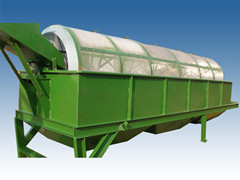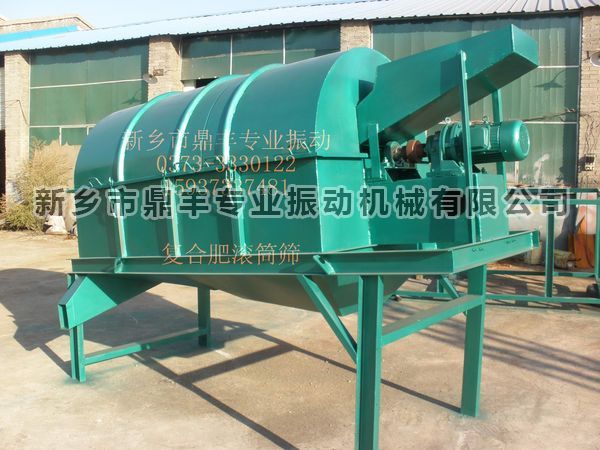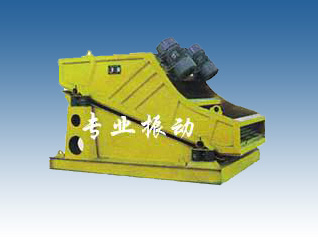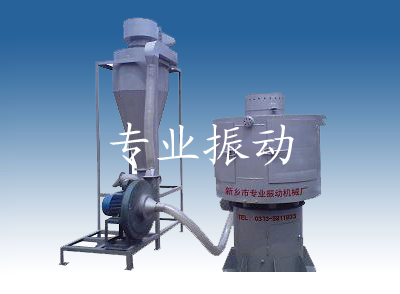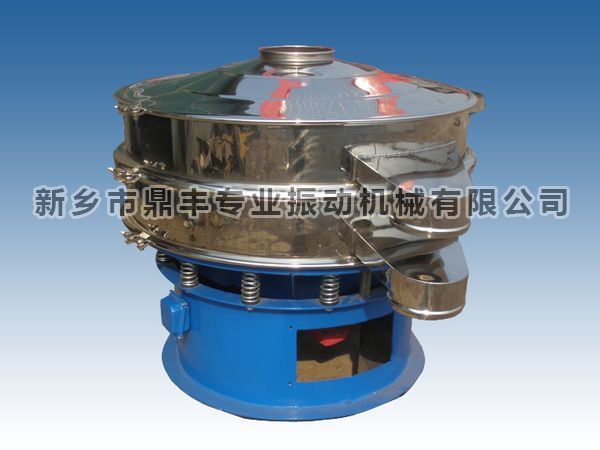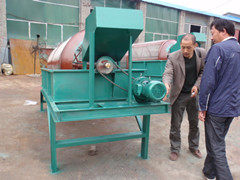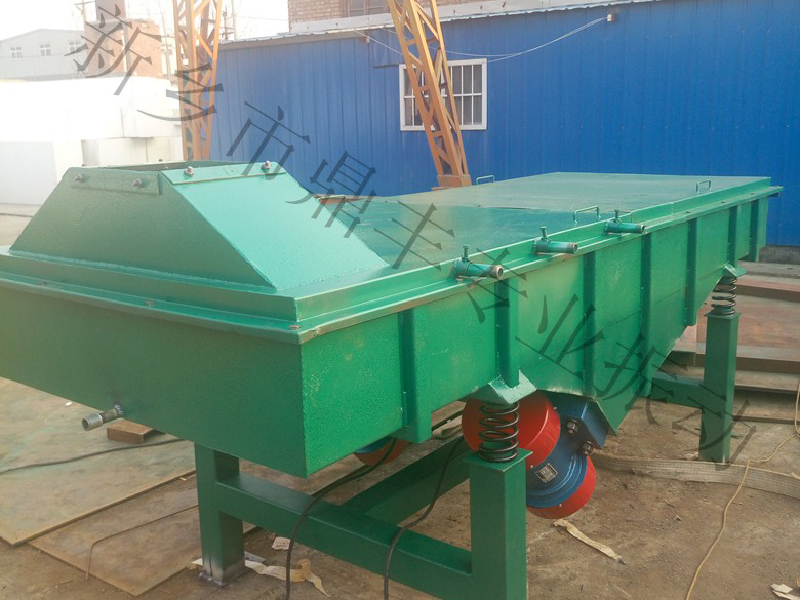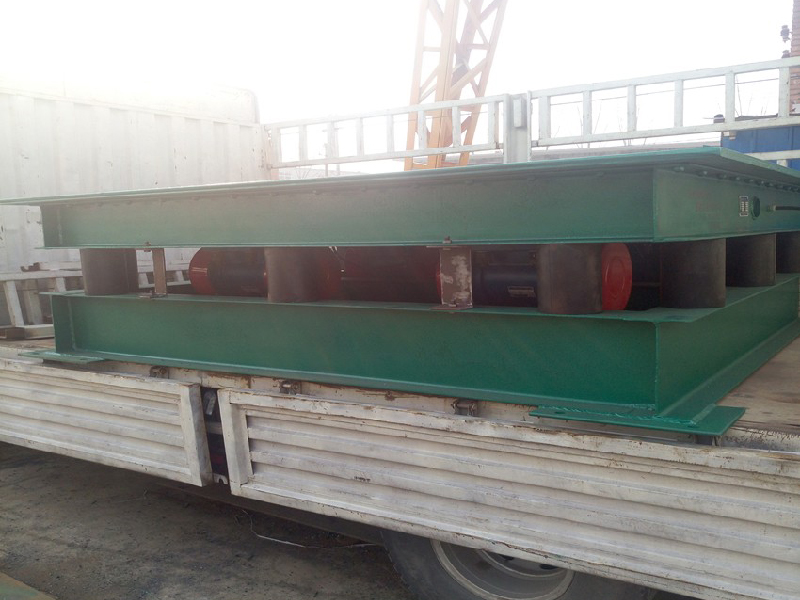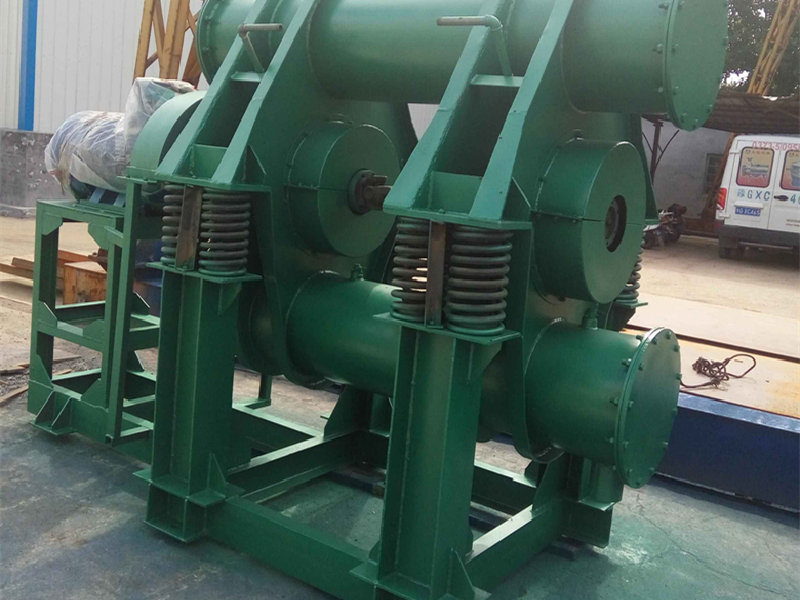1、 Overview of drum screen:
Drum screen is a screening equipment that grades materials based on their particle size, also known as drum screening machine. Due to its simple process layout, it is widely used in product grading in industries such as mining, building materials, transportation, energy, and chemical. Commonly used in the grading and screening of medium and fine-grained materials to improve material quality.
2、 The structural characteristics of the drum screening machine:
The drum screen mainly consists of a motor, a reducer, a drum device, a frame, a sealing cover, and an inlet and outlet. The drum device is installed obliquely on the frame. The electric motor is connected to the drum device through a coupling via a reducer, driving the drum device to rotate around its axis. After the material enters the drum device, due to the tilt and rotation of the drum device, the material on the screen surface flips and rolls, causing qualified materials (undersized products) to be discharged through the discharge port at the bottom of the rear end of the drum, and unqualified materials (undersized products) to be discharged through the discharge port at the tail end of the drum. Due to the flipping and rolling of materials inside the drum, materials stuck in the sieve holes can be ejected to prevent blockage of the sieve holes.
Scope of application of drum screening machine: Drum screening is mainly used for grading the particle size of materials, and is widely used in production industries such as power, mining, metallurgy, building materials, and chemical industry. Commonly used for grading refractory materials, coal, fertilizers, and gravel in sand yards, as well as for screening sticky and wet materials such as coal, coke, white ash, and gold mines, to make the product structure more uniform and meet production needs.
3、 Performance characteristics of drum screen:
The drum screening machine has low power, low energy consumption, a self-cleaning device inside the drum, and the sieve holes are not easily blocked; Small space occupation and reduced investment costs; Smooth and reliable operation; High screening efficiency; Large output; The process layout is simple, the installation and maintenance are convenient, and the operation is easy. At the same time, it has strong adaptability to materials, and can screen materials with various properties such as viscosity, high humidity, dirt, and impurities. The feeding methods are diverse, including manual and mechanical transmission, and can be produced in large quantities. The central screen adopts a circular flat steel ring design, which has good wear resistance, long service life, simple structure, and easy maintenance.
4、 Debugging of drum screen
Preparation work before debugging
1. After the installation of each component of the drum screen and passing the inspection, it can be put into trial operation. Before trial operation, it is necessary to carefully check whether each component is installed correctly according to the drawings, whether each fastener is secure, and whether there are any obstacles around the screen body that hinder the operation of the drum screen;
2. Place the rectangular inspection door in the open position and manually rotate the screening cylinder by turning the disc to observe whether the comb type cleaning mechanism has any jamming or friction. If there is any, adjust it by adjusting the bolt;
3. Check that each bearing seat and gearbox are well lubricated, and that the gearbox oil level is appropriate;
4. The power connector should be firm and reliable, with good insulation and correct grounding.
No load test
1. Press the motor control button and check that the motor direction is consistent with the direction shown on the cage type drum screen;
2. Start the equipment and run it for 4-6 hours. Observe the operation of the drum screen. If any abnormal noise or other phenomena are found, stop the machine in time for inspection, identify the cause, and troubleshoot.
After 4-6 hours of trial operation, the following items should be checked:
a、 The temperature of the main shaft bearing should not exceed 75 ℃ for high temperatures and 45 ℃ for temperature rise.
b、 Tighten the bolts in various places and tighten them promptly if any looseness is found.
3. Check the temperature rise of the motor and rotating components, which should be within the normal range.
Feeding
1. Start the feeding and discharging equipment and conduct a feeding test while the screening machine is running smoothly;
2. Close the sealed isolation cover after normal discharge (during normal operation, the sealed isolation cover should always be in the closed position);
3. Check the particle size of the discharged material and whether there is any leakage or dust;
4. Operate for half an hour, carefully inspect each component, and promptly address any issues found.
5. During the work process, the operation should be regularly checked. If abnormal operation or abnormal noise is found, the machine should be stopped in time for inspection, the cause should be identified, and the fault should be eliminated.
Other models of drum screens
